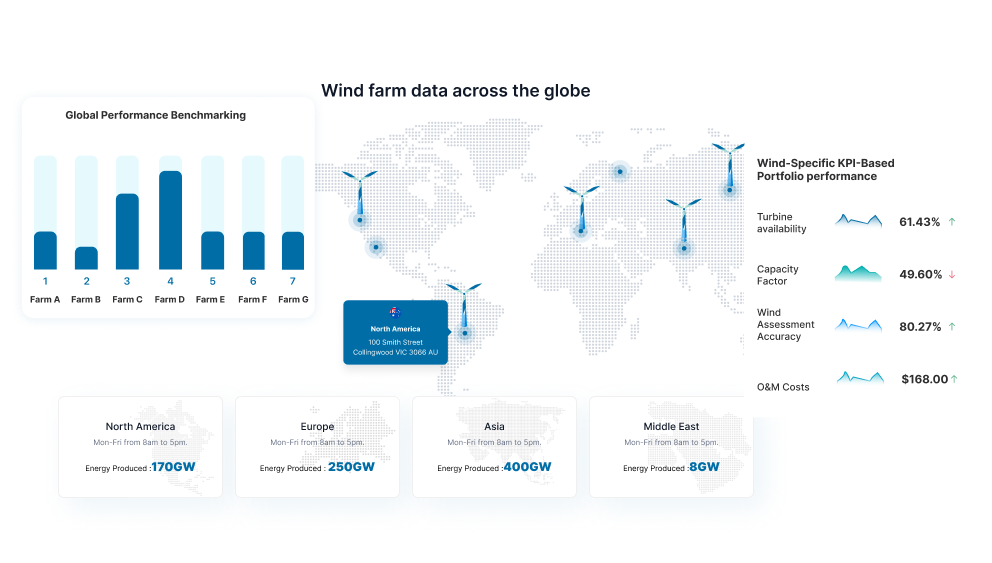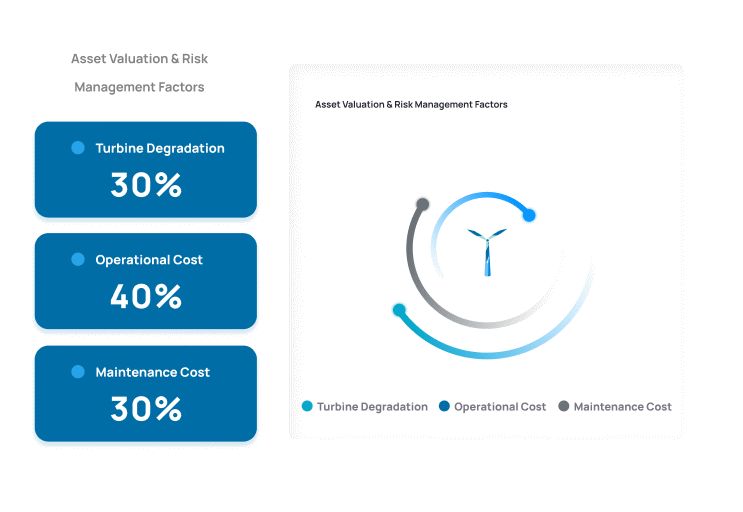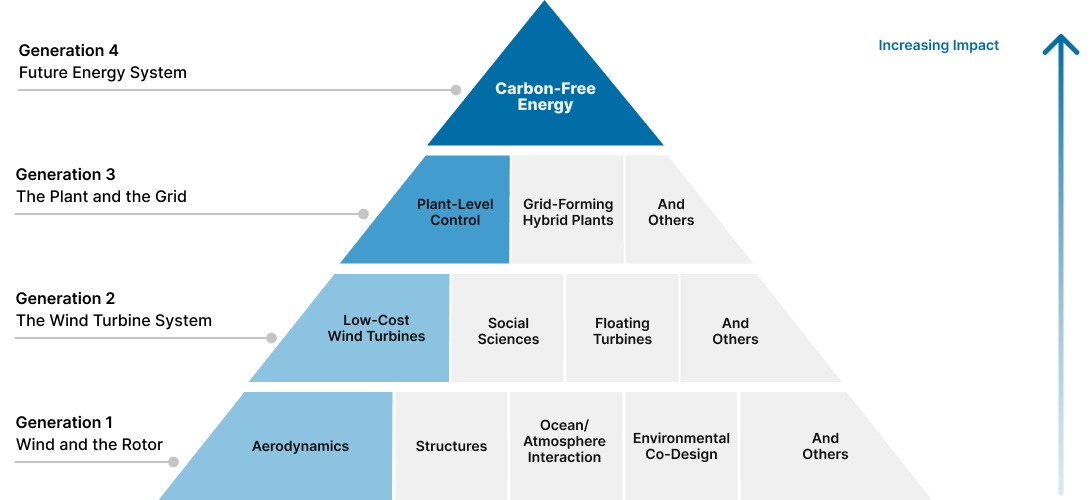As the global energy landscape shifts towards renewable sources, wind energy has emerged as a pivotal player in achieving sustainability and reducing carbon footprints. For companies operating in the wind energy sector, scaling operations efficiently and sustainably is crucial. This comprehensive guide explores strategies for sustainable growth in wind energy operations, focusing on enhancing operational efficiency, supporting sustainability, optimizing business processes, facilitating B2B transactions, and enabling informed decision-making.
Operational efficiency is the cornerstone of successful wind energy operations. By and implementing key performance indicators (KPIs), companies can identify areas for improvement and adopt industry-leading practices. Benchmarking provides a comparative analysis, helping organizations understand their performance relative to peers and set realistic goals for enhancement.
• Exploring Key Performance Indicators (KPIs) for Wind Farms: KPIs are vital metrics that measure the efficiency and effectiveness of wind energy operations. Common KPIs include capacity factor, availability, and maintenance costs. By regularly monitoring these indicators, companies can identify trends and implement corrective actions to optimize performance.
• Case Studies of Successful Benchmarking in the Wind Energy Sector: Learning from industry leaders through case studies provides valuable insights into successful benchmarking practices. These case studies highlight strategies that have led to significant improvements in operational efficiency.

Sustainability is at the heart of wind energyoperations. Meeting ESG (Environmental, Social, and Governance) targets andparticipating in voluntary carbon markets are essential for long-termviability. Effective is crucial for tracking and managing carbon emissions.
•Understanding Carbon Footprint and Its Impact on Wind Energy Operations: Carbon accounting involves measuring and reporting greenhouse gas emissions associated with wind energy operations. Understanding the carbon footprint is the first step towards mitigating environmental impact.
•Strategies for Effective Carbon Accounting and Reporting: Implementing robust carbon accounting practices ensures accurate tracking of emissions. This involves collecting data on energy consumption, emissions from manufacturing, and maintenance activities, and reporting these metrics to stakeholders.
Predictive maintenance powered by AI technologies is revolutionizing the way wind energy operations are managed. By anticipating equipment failures and optimizing maintenance schedules, companies can significantly reduce downtime and maintenance costs.
• How AI is Revolutionizing Wind Turbine Maintenance: AI algorithms analyze vast amounts of data from sensors embedded in wind turbines. By detecting patterns and anomalies, AI can predict potential failures before they occur, allowing for timely interventions and minimizing operational disruptions.
•Real-World Applications of Predictive Analytics in Wind Energy: Examples of successful predictive maintenance initiatives in the wind energy sector demonstrate the tangible benefits of AI. These case studies highlight improvements in turbine performance, extended equipment lifespan, and reduced maintenance costs.

Optimizing business processes through Business Process Management (BPM) can significantly enhance the efficiency of wind energy operations. Formalizing and streamlining operational processes leads to better resource utilization and cost savings.
• Implementing Business Process Management (BPM) in the Wind Sector: BPM involves analyzing, designing, and improving business processes to achieve organizational goals. In the wind energy sector, BPM can streamline maintenance schedules, optimize supply chain logistics, and enhance workforce management.
• Benefits of Process Optimization for Wind Energy Companies: Process optimization reduces operational costs, improves response times, and enhances overall productivity. Companies that adopt BPM can achieve more efficient workflows and better coordination among teams.
Meeting ESG (Environmental, Social, and Governance) targets is critical for the sustainability and reputation of wind energy companies. By aligning operations with ESG goals, companies can contribute to global sustainability efforts and enhance their market position.
Aligning Wind Energy Operations with ESG Goals: Integrating ESG principles into wind energy operations involves setting clear objectives for environmental impact, social responsibility, and governance practices. This alignment ensures that companies not only comply with regulations but also contribute positively to society and the environment.
•Navigating the Voluntary Carbon Markets: Opportunities and Challenges: Participating in voluntary carbon markets offers wind energy companies opportunities to offset their emissions and generate additional revenue. Understanding the complexities and potential challenges of these markets is essential for effective participation and maximizing benefits.
Facilitating effective B2B transactions is vital for the growth and sustainability of wind energy companies. Building strong relationships with vendors, suppliers, and partners is essential for seamless operations.
• Best Practices for Managing Vendor and Supplier Relationships: Effective vendor management involves establishing clear communication channels, setting performance expectations, and conducting regular reviews. Strong relationships with suppliers ensure timely delivery of components and services, reducing downtime and operational disruptions.
• Strategies for Successful Joint Ventures in Wind Energy: Joint ventures provide opportunities for resource sharing, risk mitigation, and market expansion. Companies can collaborate on large-scale projects, leveraging each other's strengths to achieve common goals.

Informed decision-making is driven by advanced analytics and insights. Leveraging AI and LLM technologies can provide prescriptive and predictive insights, helping companies make data-driven decisions.
• Utilizing AI and LLM for Prescriptive and Predictive Insights: AI-powered analytics can predict equipment failures, optimize maintenance schedules, and forecast energy production. These insights enable proactive decision-making, reducing downtime, and improving operational efficiency.
• Data-Driven Decision-Making: Enhancing Operational Excellence in Wind Energy: Integrating data from various sources, such as weather forecasts, turbine performance metrics, and market trends, provides a comprehensive view of operations. This holistic approach ensures that decisions are based on accurate and up-to-date information.
Scaling wind energy operations presents unique challenges that require innovative solutions. Addressing these challenges effectively is key to achieving sustainable growth and operational excellence.
• Overcoming Common Obstacles in Scaling Wind Farms: Common challenges in scaling wind energy operations include securing financing, navigating regulatory landscapes, and managing supply chain complexities. Identifying and addressing these obstacles early on is crucial for smooth expansion.
• Innovative Solutions for Expanding Wind Energy Capacity: Innovative technologies and strategies, such as modular turbine designs and advanced grid integration techniques, can facilitate the scaling process. These solutions enhance the flexibility and efficiency of wind energy operations, supporting sustainable growth.
The pursuit of sustainability in wind energy operations drives continuous innovation and adoption of emerging trends.Staying abreast of these trends is essential for maintaining competitive advantage and advancing sustainability goals.
• Emerging Trends in Sustainable Wind Energy Practices: Current trends in sustainable wind energy include the development of recyclable turbine blades, hybrid renewable energy systems, and energy storage solutions. These practices reduce environmental impact and enhance the efficiency of wind energy operations.
• Innovative Technologies Driving Sustainability in Wind Energy: Innovations such as floating wind farms, AI-driven energy management systems, and advanced materials for turbine construction are transforming the wind energy landscape. Embracing these technologies enables companies to achieve higher levels of sustainability and operational performance.
The wind energy industry is poised for significant growth and transformation in the coming years. Understanding future trends and making informed predictions can help companies prepare for and capitalize on emerging opportunities.
• What’s Next for the Wind Energy Industry? The future of wind energy is characterized by increased integration with other renewable energy sources, advancements in offshore wind technologies, and the rise of smart grids. These developments are expected to drive growth and enhance the resilience of wind energy systems.
• Preparing for the Future: Strategies for Long-Term Success in Wind Energy: Companies can prepare for future trends by investing in research and development, fostering partnerships, and adopting flexible business models. These strategies ensure that wind energy operations remain adaptable and resilient in the face of evolving industry dynamics.
Scaling wind energy operations sustainably requires a multifaceted approach that encompasses enhancing operational efficiency, supporting sustainability, optimizing business processes, facilitating B2B transactions, and enabling informed decision-making. By implementing the strategies outlined in this guide, companies can achieve sustainable growth, meet ESG targets, and position themselves as leaders in the renewable energy sector. By following these strategies and delving deeper into each topic through our cluster posts, wind energy companies can navigate the complexities of scaling operations and achieve sustainable growth.
Stay informed with our latest updates, industry innovations, and actionable insights tailored to drive your sustainability and operational excellence.